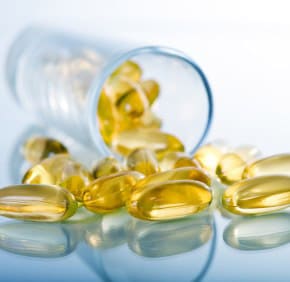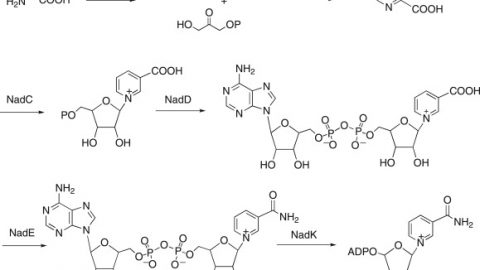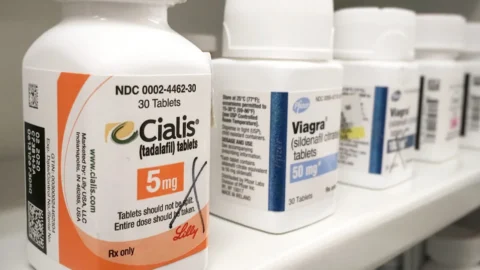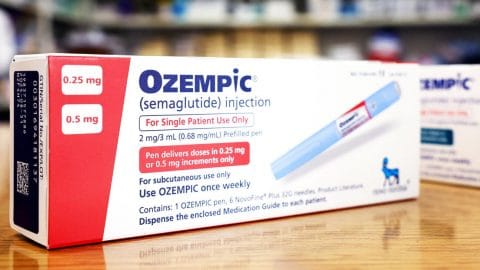EDITORS NOTE: I (Will) recently did a video on ARA which discusses a study that found ARA had positive effects on strength and muscle mass, but was not able to give details on the study at that time as it had yet to be published as an abstract or full paper. Finally, Monica now covers the meat of what most people really want to know about ARA: Can it increase strength and muscle mass as a supplement? The answer appears to be a solid yes. This excellent article below covers the recent study mentioned in my vid and write up on the study and gives the details, as well as a prior study. This is the must read article of the ARA series of articles on BrinkZone!
EDITORS NOTE II: The brand of ARA used in the studies covered in this article – the brand with longest track record and most extensive feedback by users – is X Factor by Molecular Nutrition. For supplement companies looking to carry ARA, the manufacturer of ARA is Cargill and the contact (wholesale inquiries only) is sales@arachidonic.com
In part 1 I outlined the background on ARA and why it traditionally has been, and still is in certain circles is, deemed the “bad guy” fatty acid. Part 2 covered its safety aspects and presented research findings indicating, to the contrary of the “ARA is bad dogma”, potential health benefits of ARA supplementation. In this part I will present new research showing potential beneficial effects of ARA supplementation, in conjunction with resistance training, on physical performance, muscle growth and strength gains…
The impetus for human studies on the effect of ARA supplementation on muscle growth and strength gains came from early studies on isolated animal muscle and muscle cell culture.[1-6] It was found that an increase in ARA flux through the COX enzyme (either induced by stretch or ARA supplementation) promotes production of the prostaglandins PGF2-alpha and PGE2 in muscle tissue, and that PGF2-alpha potently stimulates muscle protein synthesis [2, 5, 6] while PGE2 stimulates muscle degradation.[1, 2]
Subsequent studies in humans have confirmed these early findings. Production of PGF2-alpha is increased in muscle following a standard bout of resistance exercise in both young and old men.[7] The involvement of PGF2-alpha in muscle protein synthesis was demonstrated in men by blocking the production of PGF2-alpha by ingesting over-the-counter doses of the COX-inhibiting drugs ibuprofen (1,200 mg/day) or acetaminophen (4,000 mg/day) in conjunction with resistance exercise.[8, 9] Inhibiting production of the ARA metabolite PGF2-alpha was found to abolish the normal 24-h post-exercise increase in muscle protein synthesis.[8, 9]
It is very intriguing that fish oil supplementation actually selectively might increase production of PGF2-alpha [10], i.e. the prostaglandin that stimulates muscle protein synthesis. Several previous studies have demonstrated that fish oil increases muscle protein synthesis in humans [11, 12], and EPA (one of the fish oil fatty acids) significantly decreases the activity of the catabolic system the breaks down muscle protein (ubiquitin-proteasome) [13-20]…thus it is reasonable to speculate whether the fish oil induced anabolic effect on muscle tissue is due to (at least in part) an increased production of PGF2-alpha. There are indications that with chronic elevation of ARA in tissue membranes, production of PGF2-alpha is more likely to be up-regulated than PGE2 (i.e. the prostaglandin that stimulates muscle protein synthesis).[21]
Equipped with this data, William Llewellyn at Molecular Nutrition who developed the ARA supplement X-factor) proposed that it is plausible that ARA levels are lower in resistance-trained individuals as resistance training increases use of ARA for prostaglandin production, and that ARA supplementation may increase muscle membrane ARA pools during resistance training. Due to the fact that ARA is a substrate for the COX-2 enzyme, which converts ARA into PGF2-alpha (and other prostaglandins), increasing muscle membrane ARA levels via nutritional supplementation may potentiate the post-exercise production of PGF2-alpha. In turn, because PGF2-alpha stimulates muscle protein synthesis, a possible post-exercise increase in PGF2-alpha with ARA supplementation may further enhance subsequent muscle growth during chronic supplementation periods with concurrent resistance training.
Study 1 – Effects of AA supplementation on training adaptations in resistance-trained males
The first study to specifically investigate the effect of ARA supplementation during resistance training on body composition, training adaptations, and markers of muscle hypertrophy in resistance-trained males, was conducted in 2007.[22]
METHODS:
In a randomized, double-blind, placebo-controlled design (the gold standard in scientific research) 31 resistance-trained male subjects (22 years, 18.1 % body fat) ingested either a placebo (1 g per day corn oil) or ARA supplement 1 g per day (four 250 mg capsules, X-Factor, Molecular Nutrition, Jupiter, FL), while participating in a standardized 4 day/week resistance training program.
Subjects were instructed to avoid regular consumption of foods known to be high in omega-3 fatty acids (including fish oil, flaxseed oil, cold water fish), olive oil, sesame oil, peanut butter, N-acetyl-cysteine, conjugated linoleic acid (CLA), as well as anti-inflammatory medications including acetaminophen, ibuprofen, aspirin and other non-steroidal anti-inflammatory drugs, which may affect prostaglandin production and muscle protein synthesis response to resistance exercise.[8, 9, 23]
Fasting blood samples, body composition, bench press one-repetition maximum (1RM), leg press 1RM and Wingate anaerobic capacity sprint tests were completed after 0, 25, and 50 days of supplementation. Day 25 and 50, the fasting blood samples were taken 48 hours after the previous exercise bout. Muscle biopsies were taken from the vastus lateralis muscle on days 0 and 50.
RESULTS:
The major findings from this study were that ARA supplementation significantly increased anaerobic peak power (i.e. the maximal power generated during any 3-5 second interval, divided by body weight) by 8.5% at day 50.
In addition, ARA supplementation significantly impacted interleukin-6 (IL-6); an inflammatory marker that is most often classified as a pro-inflammatory cytokine, although data also suggest that IL-6 regulated acute phase proteins are anti-inflammatory and immunosuppressive.[24]
48 hours after the previous exercise bout on day 25, the ARA supplemented group had a marked attenuation of the increase in circulating IL-6 levels that was seen in the placebo group. IL-6 levels were also significantly lower day 50 as compared with baseline.
However, no statistically significant differences were observed between groups in body composition, strength, anabolic and catabolic hormones, or markers of muscle hypertrophy (i.e. total protein content or MHC type I, IIa, and IIx protein content) and other intramuscular markers (i.e. FP and EP3 receptor density or MHC type I, IIa, and IIx mRNA expression).
CONCLUSION:
AA supplementation during resistance-training may enhance anaerobic capacity and lessen the inflammatory response to training. However, ARA supplementation did not promote statistically greater gains in strength, muscle mass, or influence markers of muscle hypertrophy.
Comment on Study 1
One reason for the lack of effect on body composition could be that the training wasn’t controlled. Thus, it is possible that the subjects did not completely adhere to the training program. Also, there was too much heterogeneity (variability) between groups at baseline. Further, both groups were given 2 servings/day (90 g protein) of a protein supplement on top of their habitual diet. All these factors may have created too much data “noise” that obscured detection of a potential significant effect of the ARA supplement on body composition.
The marked reduction of IL-6 at 48 hr after the previous exercise bouts is notable. IL-6 is an interesting cytokine that can be a double-edged sword.[25] On one hand, intense exercise increases IL-6 production by as much as 100-fold in humans [26] and is secreted from muscle to the blood in the post-exercise period when insulin action and glucose metabolism is enhanced. On the other hand, chronic IL-6 elevation has been associated with obesity and reduced insulin action.[26] This can be explained by the findings that the positive effects of IL-6 seen in conjunction with exercise (increased insulin sensitivity, glucose production and utilization [27], and stimulation of muscle growth and myogenesis through regulation of the proliferative capacity of muscle stem cells [25]) are due to its transient elevations in IL-6 levels, which act together with a number of other metabolites produced by muscle.[25, 27, 28] In contrast, chronic disease states and some types of cancer are associated with long-lasting elevated blood IL-6 levels.[25] In such situations, IL-6 actions are coupled with increased muscle wasting, or act indirectly to promote muscle atrophy (for example, by inhibiting IGF1-dependent signaling).[25]
The decrease in non-acute (chronic) IL-6 levels (as opposed to immediately post-exercise) seen with ARA supplementation may indicate an enhanced anti-inflammatory effect of exercise.[28] Since IL-6 elevates cortisol levels [29-32] and stimulates muscle protein breakdown [33-37] this could also possibly help tip the anabolic-catabolic balance toward the anabolic state during a resistance training program. In addition, as IL-6 has been suggested to be involved in the overtraining syndrome [38], it is possible that ARA supplementation, by reducing non-acute IL-6 levels, may allow athletes to tolerate higher levels (increase training volume and intensity) of exercise training to a better degree.
Study 2 – Effects of AA supplementation on Muscle Mass, Strength, and Power
The primary purpose of this study was to investigate the effects of 8 weeks of ARA supplementation 1.5 g per day (six 250 mg capsules, X-Factor, Molecular Nutrition, Jupiter, FL) on muscle hypertrophy, body composition, strength, and power, compared to a placebo matched control.(insert reference here).
METHODS:
30 recreationally-trained males aged 20.4 ± 2.1 years with an average leg press and bench press of 231.5 ± 55.6 kg and 103.9 ± 26.8 kg, respectively, and a minimum of 1 year of resistance training experience were recruited for the study.
Subjects could not participate if they were currently taking any medications including anti-inflammatory agents, any performance enhancing supplements, or if they smoked. Specifically, subjects could not have taken nutritional supplements for at least three months prior to data collection. Inclusion criteria included that subjects had previously been performing a minimum of 3 days per week resistance training for at minimum of 1 year. Each participant signed an informed consent approved by the University of Tampa Institutional Review Board before participating in the study.
In a randomized, double-blind, placebo-controlled design, half of the subjects where provided an ARA supplement of 1.5 g per day (six 250 mg capsules, X-Factor, Molecular Nutrition) and the other half a placebo (1.5 g soy oil) supplement. Both groups were put on the same 8-week periodized resistance training protocol; 3 days per week, focused on multi-joint movements such as leg press, bench press, and bent-over rows.
Muscle thickness, lean body mass, fat mass, strength, and power were examined collectively at the end of weeks 0 and 8 to assess the effects of the supplementation. Ultrasonography measured muscle thickness of the quadriceps, dual-energy X-ray absorptiometry (DEXA) asessed lean body mass, and strength of the bench press and leg press were determined at week 0 and week 8 of the study.
RESULTS:
In the ARA supplemented group, LBM (lean body mass) significantly increased by almost 3%, corresponding to 3.5 lb (1.6 kg), from 127.21 lb to 130.74 lb (57.7 kg to 59.3 kg). No significant change was seen in the placebo group.
There was a significant time effect for muscle thickness, which increased to a greater extent in the ARA supplemented group (+9.5%) than the placebo group (+4.7%).
There was a time and group by time interaction for Wingate power (a measure of 30 second maximal anaerobic power), which increased to a greater extent in the ARA supplemented group (+10.7%) than the placebo group (+3.8%).
There was a time effect for total strength; while both groups increased their bench press and leg press strength, the increase was greater for the ARA supplemented group (+15%, 110 lb) than the placebo group (+10%, 75lb).
CONCLUSION:
These results suggest that this ARA supplementation can significantly augment gains in muscle mass and strength in young men when combined with a resistance training program.
Comment on Study 2
This is the first study to demonstrate that ARA supplementation indeed does have a significant anabolic effect and enhances both muscle and strength gains.
Study 2 used a higher dose, 1.5 g ARA per day (six 250 mg capsules, X-Factor, Molecular Nutrition) than the previous study which used 1 g ARA per day (four 250 mg capsules, X-Factor, Molecular Nutrition). Also, the training was controlled. This indicates that a serious training program may be needed in order to reap the benefits of ARA supplementation. In addition, it is possible that a higher dose (1,500 mg vs. 1,000 mg per day) may be needed to achieve the anabolic effects, especially among people who take high doses of fish oil (see part 2 for more on the interaction of ARA with the fish oil fatty acids EPA and DHA).
BOTTOM LINE
It’s clear that ARA is not a “bad guy” fatty acid to be avoided, appears very safe to use a supplement, and a recent study strongly supports the positive user feedback that it can increase strength and muscle mass.
MORE INFO HERE
References:
1. Rodemann, H.P., L. Waxman, and A.L. Goldberg, The stimulation of protein degradation in muscle by Ca2+ is mediated by prostaglandin E2 and does not require the calcium-activated protease. J Biol Chem, 1982. 257(15): p. 8716-23.
2. Rodemann, H.P. and A.L. Goldberg, Arachidonic acid, prostaglandin E2 and F2 alpha influence rates of protein turnover in skeletal and cardiac muscle. J Biol Chem, 1982. 257(4): p. 1632-8.
3. Palmer, R.M., Prostaglandins and the control of muscle protein synthesis and degradation. Prostaglandins Leukot Essent Fatty Acids, 1990. 39(2): p. 95-104.
4. Palmer, R.M., et al., The influence of changes in tension on protein synthesis and prostaglandin release in isolated rabbit muscles. Biochem J, 1983. 214(3): p. 1011-4.
5. Vandenburgh, H.H., et al., Stretch-induced prostaglandins and protein turnover in cultured skeletal muscle. Am J Physiol, 1990. 259(2 Pt 1): p. C232-40.
6. Horsley, V. and G.K. Pavlath, Prostaglandin F2(alpha) stimulates growth of skeletal muscle cells via an NFATC2-dependent pathway. J Cell Biol, 2003. 161(1): p. 111-8.
7. Trappe, T., et al., Effects of age and resistance exercise on skeletal muscle interstitial prostaglandin F(2alpha). Prostaglandins Leukot Essent Fatty Acids, 2006. 74(3): p. 175-81.
8. Trappe, T.A., et al., Skeletal muscle PGF(2)(alpha) and PGE(2) in response to eccentric resistance exercise: influence of ibuprofen acetaminophen. J Clin Endocrinol Metab, 2001. 86(10): p. 5067-70.
9. Trappe, T.A., et al., Effect of ibuprofen and acetaminophen on postexercise muscle protein synthesis. Am J Physiol Endocrinol Metab, 2002. 282(3): p. E551-6.
10. Zulyniak, M.A., et al., Fish oil supplementation alters circulating eicosanoid concentrations in young healthy men. Metabolism, 2013. 62(8): p. 1107-13.
11. Smith, G.I., et al., Omega-3 polyunsaturated fatty acids augment the muscle protein anabolic response to hyperinsulinaemia-hyperaminoacidaemia in healthy young and middle-aged men and women. Clin Sci (Lond), 2011. 121(6): p. 267-78.
12. Smith, G.I., et al., Dietary omega-3 fatty acid supplementation increases the rate of muscle protein synthesis in older adults: a randomized controlled trial. Am J Clin Nutr, 2011. 93(2): p. 402-12.
13. Fearon, K.C., et al., Effect of a protein and energy dense N-3 fatty acid enriched oral supplement on loss of weight and lean tissue in cancer cachexia: a randomised double blind trial. Gut, 2003. 52(10): p. 1479-86.
14. Ross, J.A., A.G. Moses, and K.C. Fearon, The anti-catabolic effects of n-3 fatty acids. Curr Opin Clin Nutr Metab Care, 1999. 2(3): p. 219-26.
15. Smith, H.J., N.A. Greenberg, and M.J. Tisdale, Effect of eicosapentaenoic acid, protein and amino acids on protein synthesis and degradation in skeletal muscle of cachectic mice. Br J Cancer, 2004. 91(2): p. 408-12.
16. Smith, H.J., J. Khal, and M.J. Tisdale, Downregulation of ubiquitin-dependent protein degradation in murine myotubes during hyperthermia by eicosapentaenoic acid. Biochem Biophys Res Commun, 2005. 332(1): p. 83-8.
17. Smith, H.J., M.J. Lorite, and M.J. Tisdale, Effect of a cancer cachectic factor on protein synthesis/degradation in murine C2C12 myoblasts: modulation by eicosapentaenoic acid. Cancer Res, 1999. 59(21): p. 5507-13.
18. Smith, H.J. and M.J. Tisdale, Induction of apoptosis by a cachectic-factor in murine myotubes and inhibition by eicosapentaenoic acid. Apoptosis, 2003. 8(2): p. 161-9.
19. Whitehouse, A.S., et al., Mechanism of attenuation of skeletal muscle protein catabolism in cancer cachexia by eicosapentaenoic acid. Cancer Res, 2001. 61(9): p. 3604-9.
20. Whitehouse, A.S. and M.J. Tisdale, Downregulation of ubiquitin-dependent proteolysis by eicosapentaenoic acid in acute starvation. Biochem Biophys Res Commun, 2001. 285(3): p. 598-602.
21. Scott, W.A., et al., Regulation of arachidonic acid metabolism by macrophage activation. J Exp Med, 1982. 155(4): p. 1148-60.
22. Roberts, M.D., et al., Effects of arachidonic acid supplementation on training adaptations in resistance-trained males. J Int Soc Sports Nutr, 2007. 4: p. 21.
23. Weinheimer, E.M., et al., Resistance exercise and cyclooxygenase (COX) expression in human skeletal muscle: implications for COX-inhibiting drugs and protein synthesis. Am J Physiol Regul Integr Comp Physiol, 2007. 292(6): p. R2241-8.
24. Pedersen, B.K., et al., Role of myokines in exercise and metabolism. J Appl Physiol (1985), 2007. 103(3): p. 1093-8.
25. Munoz-Canoves, P., et al., Interleukin-6 myokine signaling in skeletal muscle: a double-edged sword? FEBS J, 2013. 280(17): p. 4131-48.
26. Pedersen, B.K. and M.A. Febbraio, Muscle as an endocrine organ: focus on muscle-derived interleukin-6. Physiol Rev, 2008. 88(4): p. 1379-406.
27. Febbraio, M.A., et al., Interleukin-6 is a novel factor mediating glucose homeostasis during skeletal muscle contraction. Diabetes, 2004. 53(7): p. 1643-8.
28. Gleeson, M., Immune function in sport and exercise. J Appl Physiol (1985), 2007. 103(2): p. 693-9.
29. Chrousos, G.P., The hypothalamic-pituitary-adrenal axis and immune-mediated inflammation. N Engl J Med, 1995. 332(20): p. 1351-62.
30. Goebel, M.U., et al., Interleukin-6 and tumor necrosis factor-alpha production after acute psychological stress, exercise, and infused isoproterenol: differential effects and pathways. Psychosom Med, 2000. 62(4): p. 591-8.
31. Nielsen, S. and B.K. Pedersen, Skeletal muscle as an immunogenic organ. Curr Opin Pharmacol, 2008. 8(3): p. 346-51.
32. Pedersen, B.K., et al., The metabolic role of IL-6 produced during exercise: is IL-6 an exercise factor? Proc Nutr Soc, 2004. 63(2): p. 263-7.
33. Goodman, M.N., Interleukin-6 induces skeletal muscle protein breakdown in rats. Proc Soc Exp Biol Med, 1994. 205(2): p. 182-5.
34. Fujita, J., et al., Role of interleukin-6 in skeletal muscle protein breakdown and cathepsin activity in vivo. Eur Surg Res, 1996. 28(5): p. 361-6.
35. Tsujinaka, T., et al., Interleukin 6 receptor antibody inhibits muscle atrophy and modulates proteolytic systems in interleukin 6 transgenic mice. J Clin Invest, 1996. 97(1): p. 244-9.
36. Haddad, F., et al., IL-6-induced skeletal muscle atrophy. J Appl Physiol (1985), 2005. 98(3): p. 911-7.
37. Tsujinaka, T., et al., Muscle undergoes atrophy in association with increase of lysosomal cathepsin activity in interleukin-6 transgenic mouse. Biochem Biophys Res Commun, 1995. 207(1): p. 168-74.
38. Smith, L.L., Cytokine hypothesis of overtraining: a physiological adaptation to excessive stress? Med Sci Sports Exerc, 2000. 32(2): p. 317-31.









Is anyone making an oil blend to optimaize DHA, EPA, and ARA ratios? If not, why not?